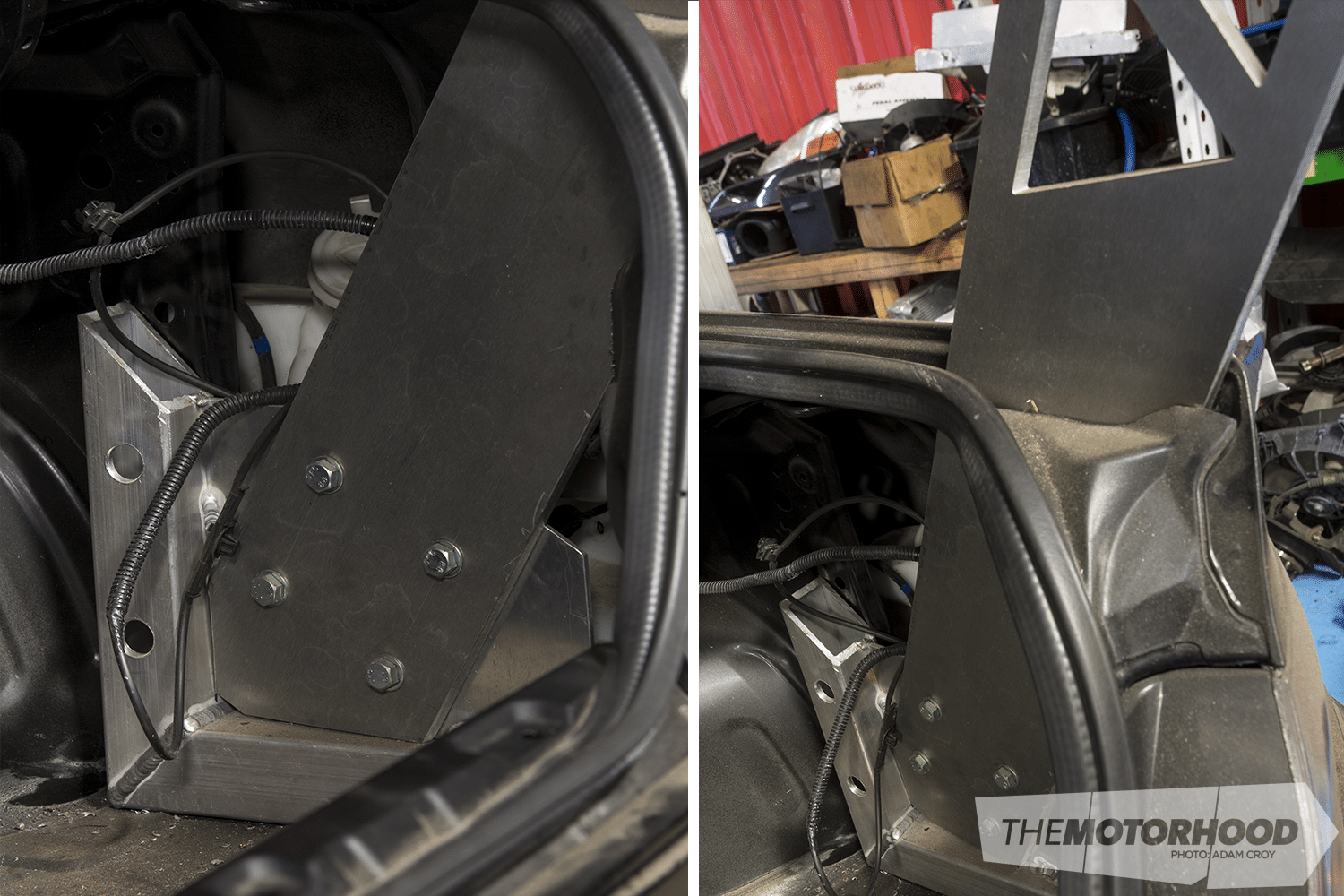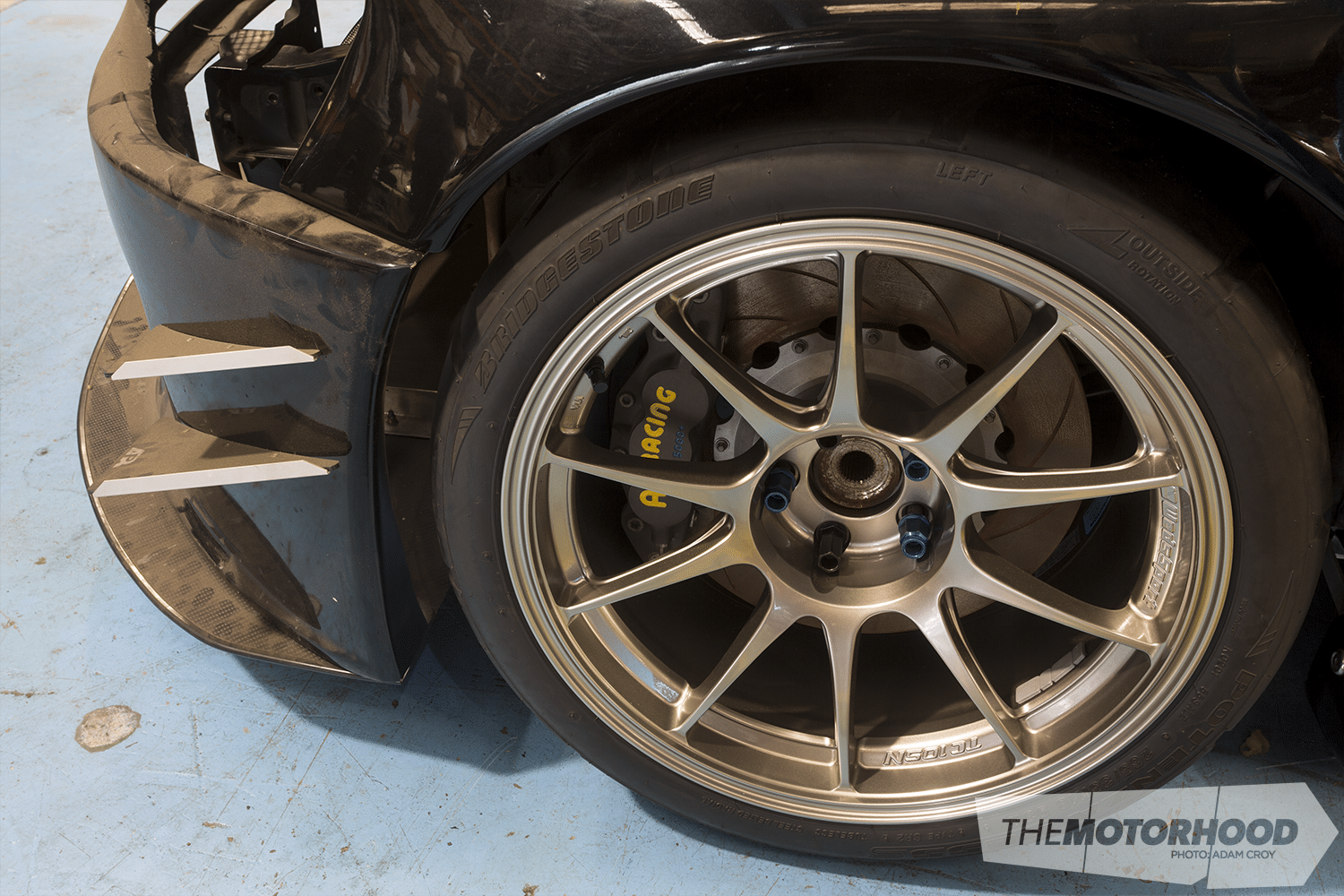It was the 2011 V 4&Rotary Nationals event — yes, many moons ago — when Jacky Tse of Jtune Automotive first shared his Evo VIII time attack build with the world. At the time the car was seemingly very close to completion with any and all chassis work, suspension, and body work completed. So why have you not seen it tearing up local circuits?

With constant upgrades, and the fact that he has sold the three engine combinations it has had since its public debut, you can see why the deadline has been pushed outward. In between running the workshop, all the other builds going on, and racing in Honda Cup and Superlap, progress has been slow.

In fact, if you walked into the shop — as we have countless times in the past few years — you would be forgiven for thinking it’s one of those cars that just occupies a hoist in a shop for nothing more than storage. But despite the thick layer of workshop grime that would give any ’50s housewife a heart attack, the Evo is moving towards a completion date in only a few months’ time.

Externally the car remains somewhat unchanged since 2011, with the APR Performance full aero kit, including canards, Formula GT carbon mirrors, and front undertray. The front bumper has been extended by GT Refinishers to sit level with the side skirts. The dry carbon bonnet is an Alex Racing item and, believe it or not, is only a single layer of carbon, yet you could stand on it.

The wide body itself is also APR Performance, and swallows the 18×10.5-inch (+12) Wedsports TC105s with ease. There is also an APR rear diffuser to complete the combo. The APR GTC-200 wing is of gigantic proportions.

Because of this, the wing mounts directly to the chassis via large aviation-grade alloy uprights and alloy mounts on the rear chassis rails. A wing capable of producing this much downforce would simply crush the boot lid at any decent speed should it be attached the traditional way. The aero is very mild at the moment, although it’s an area that the guys will look at developing once the Evo hits the track. Don’t expect it to end up like the NEMO Evo, though, as Jacky is a traditionalist when it comes to time attack racing.

What we will call the ‘stage-one engine’ is currently being plumbed in using Wiggins clamps. Internally the 4G63 runs a Cosworth 2.3 stroker kit that once lived inside the Serria Evo. Rev limited to 8500, plans are to go to a 2.2 with a 10,000rpm limit once Jacky has had some seat time. In true Kiwi fashion, plenty of attention is being paid to the layout of the engine compartment. All sensors, and even the fuel regulator, are housed inside the cabin to keep the engine bay uncluttered and allow for easy replacement trackside should one fail. Currently the plan is to run an AEM Infinity ECU alongside the MoTeC centre diff controller. Although, with the move to a Quaife five-speed sequential, the option for paddle shift could see a MoTeC or Life Racing ECU needed.

The Borg Warner EFR is commonplace in time attack in Evos, although this one is slightly smaller than the likes of what is on the Tilton Evo. The twin-scroll exhaust housing is fed by a true twin-scroll Full Race manifold with dual TiAL wastegates. With the radiator and intercooler sitting side by side, this makes for extremely short piping, removing roughly 1.5 litres of volume from the intake charge, all in the aid of boost response.

The intake is an AMS F1-I, largely regarded as the best in the biz. The cast-alloy beast is built to handle big boost and has a massive 5.24-litre capacity with offset internal bell mouths. The throttle body is a billet S90 performance 75mm.

The oiling system once served on the infamous NEMO Evo. A Moroso three-stage pump with billet pan and Petterson breather and reservoir. The plumbing is Speedflow -12 braid. To help keep weight down the reservoir is mounted just behind the firewall to reduce line length and fluid volume.

Feeding E86 through four 2500cc injectors are four Bosch 044 pumps running in pairs through twin Speedflow 2000 Series lightweight braided lines. In order to run such a large-capacity single injector, the fuel pumps will run in sequential format. Under 3000rpm only one pump per pair will run, and over 4000rpm all four will pump E85. The single return line will also feature cooler before entering the tank.

As previously mentioned, Jacky is a keen advocate for time attack cars remaining in the true spirit of time attack racing — so as complete as possible in terms of the body. There is nothing stopping this car becoming road legal with an authority card. Refraining from cutting out panel steel means reducing weight has to be done through things like the titanium exhaust system and also a full titanium and alloy bolt set that will be added during final fit up.

The suspension is simple but effective. HKS Hypermax IIIs, although not with off-the-shelf valving (these have the same dampening as the HKS CT230 Evo). Spring rates are 16kg and 12kg to begin with. Hardrace adjustable arms and an Ultra Racing 23mm rear sway bar can also be found under the rear. There are still some changes to come for one pick-up point, which will help reduce geometry changes throughout suspension travel. The rear diff itself is a Cusco item.

Up front there are Racefab tubular arms with Hardrace bearings and roll centre adjusters. There is also an Ultra Racing sway bar to be added. The braking package is nothing too over the top, but should see the Evo right for one quick lap.

At the rear there are Evo X Brembo two-pot calipers and vented rotors, while up front there are AP Racing Pro 500 six-pot calipers and two-piece rotors. Currently the Wedsports are running a 265 semi, although these will increase to 295s once they hit the track.

A Tilton 600 Series floor-mounted pedal box had been mounted inside the cabin with remote reservoirs for fluid ready for some fancy footwork.

It’s bare bones in the cabin at the moment, but a single seat and a shifter for the Quaife five-speed sequential will soon be added. Jacky is hoping to have the car up and running within a few months’ time, when the real development will begin. These guys are no strangers to building quick circuit cars, and the time, development, and technology that the Evo is already packing should make for a very quick car.
Jacky would like to thanks their sponsors that have help with the build Greenlane Speed Shop, Exedy NZ, Motul NZ, Prosport Auto, AEM Electronics, AMS Performance, FullRace Motorsport, and Prosport Racing.




